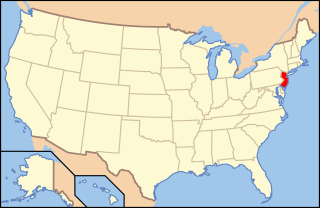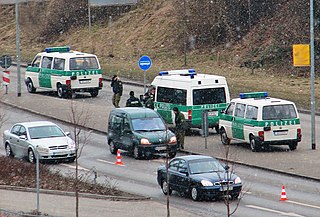Americas
North America
Canada
- Canada: Depends on province, 0.04–0.08% BAC by mass [8]
The Criminal Law Amendment Act, 1968–69 made it illegal to drive with a BAC in excess of 80 mg/100 mL of blood. Refusal of a police officer's demand to provide a breath sample was made an offence at the same time and both began as summary conviction offenses, with a maximum fine of up to $5000 and up to six months imprisonment. [9] [10] Many provinces have administrative penalties related to drunk driving. [11] These penalties include immediate driver's licence suspensions and heavy fines. These penalties are often imposed for blood-alcohol concentrations exceeding 40 or 50 mg/dL. [12]
There is a zero-tolerance policy for new drivers undergoing graduated licensing in Ontario, British Columbia, [13] Newfoundland and Labrador and Alberta; [14] drivers under the age of 22 in Manitoba, New Brunswick, Northwest Territories, Nova Scotia, Ontario, [15] Saskatchewan and in Quebec receive a 30-day suspension and 7-day vehicle seizure. [16] Drivers in Alberta who are in the graduated licensing program, regardless of age, are subject to the same 30-day/7-day suspensions/seizure policy. [17]
Mexico
- Mexico: 0.04–0.10% [18]
United States

- United States: Depends on state, 0.08% or 0.05% BAC by volume
Under the laws of the United States, it is unlawful to drive a motor vehicle when the ability to do so is materially impaired by the consumption of alcohol or other drugs, including prescription medications. For impaired driving charges involving the consumption of alcohol, the blood alcohol level at which impairment is presumed is 0.08, although it is possible to be convicted of impaired driving with a lower blood alcohol level. [19] Some states define two impaired driving offenses. [20]
- The first is the traditional offense, variously called driving under the influence of alcohol (DUI), driving while intoxicated/impaired (DWI), [21] operating under the influence (OUI), or operating while intoxicated/impaired (OWI).
- The second and more recent is the so-called illegal per se offense of driving with a blood alcohol concentration (BAC) by volume (mass of alcohol/volume of blood) of 0.08% (previously 0.10%) or higher.
The first offense requires proof of intoxication, although evidence of BAC is admissible as rebuttably presumptive evidence of that intoxication; the second requires only proof of BAC at the time of being in physical control of a motor vehicle. An accused may potentially be convicted of both offenses as a result of a single incident, but may only be punished for one. [22] The differences between state penalties still varies. Wisconsin, for instance, is the only state that continues to treat first offense drunk driving arrests as forfeiture. [23]

Some states also include a lesser charge of driving with a BAC of 0.05%; other states limit this offense to drivers under the age of 21. All states and DC also now have zero tolerance laws: the license of anyone under 21 driving with any detectable alcohol in their bloodstream (BAC limits of 0.01% or 0.02% apply in some states, such as Florida) will be suspended. In 2009, Puerto Rico joined these states, setting a limit of 0.02 for drivers under 21, despite maintaining a legal drinking age of 18. [24]
The blood alcohol limit for commercial drivers is 0.04%. [25] Pilots of aircraft may not fly within eight hours of consuming alcohol, while under the impairing influence of alcohol or any other drug, or while showing a blood alcohol concentration equal to or greater than 0.04 grams per decilitre of blood. [26]
Utah became the first U.S. state to lower the legal limit to .05% BAC by volume on 24 March 2017. The law went into effect on 30 December 2018. [27] The bill's passage, HB155, was controversial in the state. A poll published on 29 July 2017 found 50 percent of Utahns supported the new law, but 47 percent opposed it.
In most states, the timing of the chemical test for suspected drunk driving is important because the law mandates a result within a given time period after the driving stopped, usually two hours.[ citation needed ]
In some states, an intoxicated person may be convicted of a DUI in a parked car if the individual is sitting behind the wheel of the car. [28] In some jurisdictions, the occupant of a vehicle might be charged with impaired driving even if sleeping in the back seat based on proof of risk that the occupant would put the vehicle in motion while intoxicated. [29] Some states allow for a charge of attempted DUI if an officer can reasonably infer that the defendant intended to drive a vehicle while impaired. [30]
Some states such as Massachusetts and Texas, have judicial guidelines requiring a mandatory minimum sentence for repeat offenders or for DUI/DWI offences with enhancements like an open container. The strictest states like Washington even have mandatory minimum penalties for first-time offenders. [31] Repeated impaired driving offenses or an impaired driving incident that results in bodily injury to another may trigger more significant penalties, and potentially trigger a felony charge. [32] Many states in the US have adopted truth in sentencing laws that enforce strict guidelines on sentencing, differing from previous practice where prison time was reduced or suspended after sentencing had been issued. [33]
Caribbean
- Bahamas: 0.08% [34]
- Cuba: 0 for young or inexperienced drivers and professional or commercial drivers, 0.05% for all other drivers [3]
- Dominican Republic: 0.05% [3]
- Jamaica: The law states that the legal alcohol limit is 35 μg/100 mL alcohol in breath or a blood alcohol level of 80 mg/100 mL alcohol in blood. [35]
- Trinidad and Tobago: 35 μg/(100 mL) BrAC, 80 mg/100 mL BAC [36] [37]
- Cayman Islands: 0.10% BAC[ citation needed ]
Central America
- Belize: 0.08% [3]
- Costa Rica: 0.02% [3] for public transport, commercial drivers and new drivers, or 0.05% for all others. More results in a fine of CRC 280,000 (US$489.61 as of 27 July 2017). A BAC in excess of 0.05% for public transport, commercial drivers and new drivers or 0.075% for all others additionally results in a 1- to 3-year prison sentence, vehicle impoundment and 2-year licence suspension. [38]
- El Salvador: 0.05% [3]
- Guatemala: 0.08% [3]
- Honduras: 0.07% [3]
- Nicaragua: 0.05% [39]
- Panama: 0.08% [3]
South America
- Argentina: 0%. In 2023, Argentina adopted a national zero tolerance law. [40] The law applies on national roads, and 18 out of 24 provincial jurisdictions have adopted the limit of 0.0 g/l for provincial routes. As of February 2024, the provinces of CABA, Corrientes, Misiones, Mendoza, San Juan and Santa Fe retain the old limits (0% for public transport and commercial vehicles, 0.02% for motorcycles, and 0.05% for all others). [41]
- Bolivia: 0.05% for professional drivers only [42]
- Brazil: Since 2008 Brazil practices zero tolerance. If a driver is found to be driving with any BAC (up to 0.06%), the driver is to have their license suspended for 12 months, pay a fine of BRL 2,934.70 (doubled if recurrence) and will have the car seized. Anything above 0.06% is considered a criminal offense. [43] [44]
- Chile: From 15 March 2012, 0.03–0.08% the driver is considered to be driving under the influence and carries a three-month suspension and a fine of US$82–410 (as of 19 March 2012 [update] ); over 0.08% the driver is considered to be drunk and carries a prison term of 61 to 301 days, a fine of US$164–820 (as of 19 March 2012 [update] ) and a two-year suspension for the first offense, a five-year suspension for a second offense, and a life suspension for a third offense. [45]
- Colombia: Colombia is known to have the toughest penalties against those driving under the influence in all of Latin America and practice a zero tolerance policy on DUIs. If a driver is found to be driving with 20–39 mg/100 mL ethanol in blood (equivalent to 0.02–0.039% BAC), the driver is to have their license suspended for a year, pay a fine of US$914 (as of 22 December 2013 [update] ), and serve twenty hours of community service. In the most extreme cases, if a driver is found to be driving with grade three alcohol (150 mg/100 mL ethanol in blood), the driver is to have their licence confiscated for ten years, pay a fine of US$7,314 (as of 22 December 2013 [update] ), and serve fifty hours of community service. If the driver gets in a crash and causes injuries and or deaths, the driver is to face between 2.5 and eighteen years of prison sentence and their license will be cancelled permanently. [46]
- Ecuador: 0.01% for commercial or professional drivers; 0.03% for all other drivers [3]
- Guyana: 0.08% [3]
- Paraguay: 0 [47]
- Peru: Drivers below a 0.05% BAC will be given a warning. At a 0.05% and over, the driver will be given a fine and a license suspension of no less than six months and no more than two years. If the driver is involved in a crash without causing death or severe injury to another individual, he or she may possibly face jail time. If the driver causes a crash with a BAC over 0.101%, involving death or severe injury to another party, he or she will receive a mandatory prison sentence of three to five years. The driver's license will also be permanently revoked. [ citation needed ]
- Suriname: 0.05% [3]
- Uruguay: 0. [3] The driver will have to pay a fine of US$448 (as of 29 June 2020 [update] ) and will have their licence suspended. Depending on the concentration of alcohol in blood and the times the driver was found guilty, the suspension goes from a minimum of six months to a maximum of two years. [48] If the driver causes a crash involving death, he or she will be charged with negligent homicide and will face a minimum of six months in prison.
- Venezuela: 0.08% [3]










